Matangini Hazra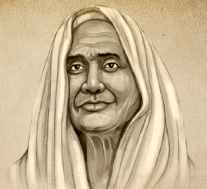
IntroductionShri Matangini Hazra was an Indian revolutionary who took part in the Indian Independence Movement until the British Indian police shot and killed her on September 29, 1942, in the vicinity of the Tamluk Police Station. Gandhi buri, Bengali meaning "old lady Gandhi," was her nickname. She actively got involved in the Indian independence struggle in 1905 as a Gandhian. The involvement of women in the freedom struggle in Midnapore was a noteworthy aspect. She participated in the Non-Cooperation Movement in 1932 and was detained for violating the Salt Act. Although she was quickly released, she continued to call for the tax to be repealed. She was detained at Baharampur for six months after being arrested a second time. After being freed, she started spinning her own Khadi and became a prominent member of the Indian National Congress. She also went to the subdivisional Congress session at Serampore in 1933, where she was hurt by a police baton charge that followed. Early LifeMatangini (1870-1942) was a well-known humanitarian and Gandhian leader. Matangini Hazra was born in West Bengal's Midnapore region in the Hogla village of Tamluk Thana. She didn't have access to education at her father's home because she was a poor peasant girl. Matangini was young when she was given in marriage and was left childless when she was eighteen. She actively participated in the fight for freedom from colonial control and adhered to Mahatma Gandhi's nonviolent philosophy. Hazra then started her activity in her ancestral village, where she spent most of her time caring for the elderly and sick. At the time, she had no idea that her future would mark her as an unsung female freedom fighter. Contribution to Freedom StruggleMatangini Hazra actively engaged in several anti-British protests as a member of the Indian National Congress. Even though she was jailed multiple times, she persisted in her battle for freedom. Hazra thought that Indians had the right to self-government and that India belonged to them. Matangini Hazra has been characterized as a fervent advocate for independence. In a 1933 incident, Hazra took part in a freedom march that was conducted in the district capital during a sweltering afternoon. Its final destination was the governor's palace, where the governor remained steadfastly seated on his balcony and detachedly watched the march go by as though it were a cricket match or some sort of native custom. Matangini led the parade while carrying the American flag aloft. She abruptly broke past the barricade as they drew nearer to the governor's balcony, dodging the soldiers while waving her banner and yelling, "Go back, Laat Sahib." For this audacious act, British police violently beat up and injured Hazra. On September 29, 1942, 73-year-old Hazra led a big procession of over 6,000 demonstrators, largely women, to seize control of the Tamluk police station from British forces. Her courage and passionate deeds were at the forefront of the event. In the chaos that followed, the police attempted to stop the march, and Hazra begged the officers not to shoot at the demonstrators. She was blatantly fired three times after her cries remained unanswered. She kept marching till she passed away from a heart attack. 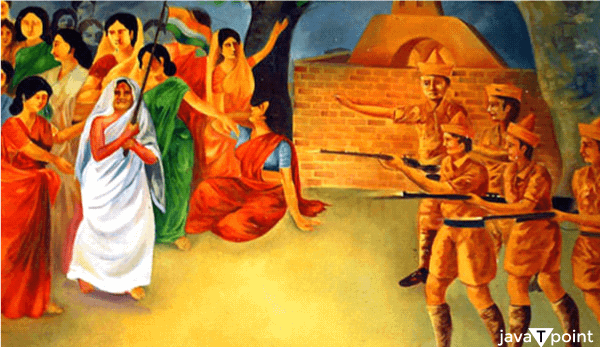
The sacrifice of Hazra was not in vain. She devoted her entire life to advancing the independence of the nation, and her work has not gone unnoticed. In 1977, she became the first female revolutionary whose statue was raised in the Kolkata Maidan. Numerous schools, communities, and roads have been named in her honor, including a major section of the Hazra Road in Kolkata. One of the ladies from a lowly background who made history in India's war for independence was Matangini Hazra. Hazra's involvement in 'the Salt Satyagraha' in 1930 was one of the most motivational events in Hazra's life. 'The Salt Satyagraha' was a non-violent demonstration against the monopoly on salt manufacture and distribution held by the British government. Hazra was detained by British officials after leading a group of ladies in breaking the salt prohibition. She fought for freedom despite being subjected to torture and beatings. During the Quit India Movement in 1942, Hazra made her most significant contribution to India's freedom cause. Mahatma Gandhi started the Quit India movement, a large-scale civil disobedience action, in August 1942. At the time, Hazra led a parade of roughly 6,000 people through Tamluk while they sang national anthems and carried the Indian flag. Hazra disobeyed the British police's orders to disperse. As a result of the police shooting her dead, she died as a martyr for the cause of Indian freedom. Matangini Hazra's life is a reminder for all of us. She was a strong woman who was not hesitant to speak up against injustice and defend her principles. She never wavered in her commitment to her beliefs and fought till the very end for freedom. Her bravery and tenacity remind us to never give up on our goals, no matter how challenging the road may be. The Reason Matangini Hazra is Referred to as Gandhi BuriThere is no denying that Matangini Hazra was an avid admirer of Gandhi. She joined the movement for liberation after being motivated by Mahatma. She turned down all foreign items, just like he did, and narrated her tale. She was frequently remembered for her charitable activity in the village. 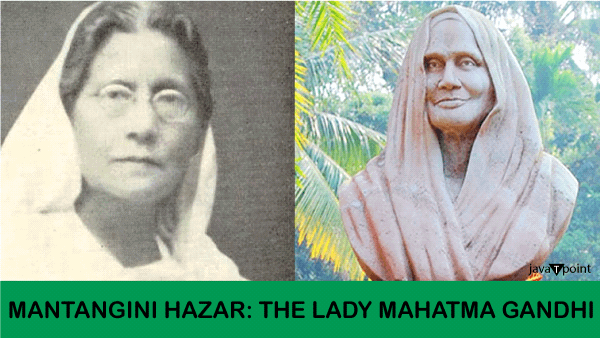
She became notorious in the police barracks for her active involvement in Mahatma Gandhi's Civil Disobedience Movement, particularly her part in the Salt Satyagraha movement. People observed a frail old woman walk several kilometers without making a single frown because of her arrest. She was quickly released. She was affectionately referred to as "old lady Gandhi" by the locals because of her commitment to the freedom struggle's Gandhian tenets. She continued to support the independence cause while being arrested. Strong and Gritty like GandhiLike Mahatma Gandhi, Hazra was unable to let her frail physique stop her from taking part in the war for liberation. She was a local voice against the horrors committed by the British. Soon after her detention, Matangini Hazra took part in the campaign to abolish the Chowkidari levy, which the British had imposed on the villagers to pay for a small local police force that would be deployed to spy on them. After being freed, Hazra began spinning Khadi as a protest despite losing her vision. She had tirelessly cared for the patients, particularly the children, during the smallpox pandemic. While attending the sub-divisional congress of the Indian National Congress in 1933, Matangini was also severely hurt by a police baton charge. She was harmed because of receiving violent strikes. Her method of protest was identical to Gandhi's, who advocated nonviolent resistance to achieve true freedom. She was able to get through security later that year, during Sir John Anderson's visit as the Governor of Bengal, and glide the black flag as a sign of dissent. She received a six-month prison sentence from the British government. A Hero of the NationThe effect Matangini Hazra's death had on the populace was an intriguing side effect. Soon after, in 1942, the people of Midnapore proclaimed their freedom from the British administration. People continued to be very upset, and they occupied every government building. For many years, no British official was permitted to enter. A grateful nation continues to honor Matangini Hazra today, nearly 80 years after she gave her life. In Midnapore, a statue of her can be seen at the location of the shooting. In 1977, her statue was erected at the Maidan in Kolkata as the city's first statue of a woman. 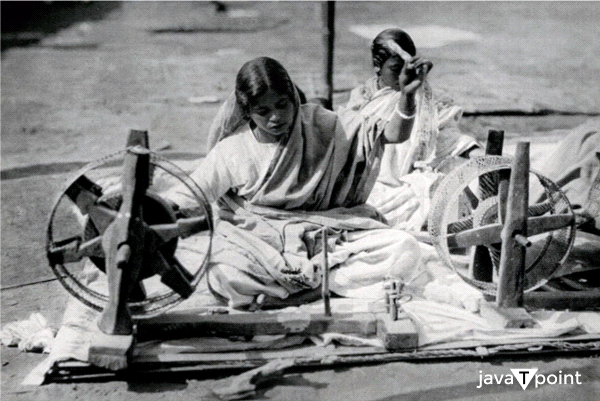
In West Bengal, Matangini has streets and schools named after her. Matangini Hazra was one of the freedom warriors honored in the series of stamps that India issued in 2002 to mark the 60th anniversary of the Quit India Movement. The odds were stacked against Matangini Hazra from the beginning of her life, but as a woman, she seized control and changed the course of her life, emerging as a role model for her determination and refusal to give up. India was governed brutally by the British Raj for two centuries. The British East India Company started trading with India in 1608, but when colonies were established, and it wriggled its way into Indian politics, it gradually consolidated its hold over the country. Indian culture was repressed by the British Empire, which also impoverished its people and plagiarised their wealth and resources. India's people, who had endured continual oppression, fought for their right to freedom. Indians steadfastly resisted British authority and worked to end colonial tyranny from 1857 to 1947. Mahatma Gandhi quickly established himself as the public face of the Indian Freedom Struggle as the movement grew. 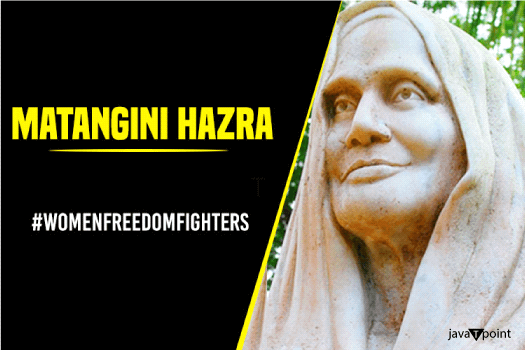
India's freedom was secured through his determination, resiliency, and capacity to inspire the populace. His strategy of nonviolent protests against the British worked, earning him the title "father of the nation." There are still a lot of unsung heroes from the Indian Freedom Struggle, though. Matangini Hazra stands out among them. She was an ardent member of the Indian Independence Movement from West Bengal till she was fatally shot by British Indian police. She gave her life in a struggle against the British as an advocate for the rights of her fellow Indians and to free India from the oppression and injustice of the British Raj. She demonstrated the highest moral bravery to stand up for her country throughout her career as a tenacious activist. By being prepared to act morally in the face of difficulty, which requires considerable thinking and deliberation, Matangini Hazra exemplified the very concept of moral bravery. She voiced her personal opinions and ideals in the face of disagreement and rejection. Hazra confronted those who had authority over her head-on in the interest of the betterment of humanity. The fact that Matangini Hazra has survived is a testament to her unwavering bravery and sincere leadership. She will always hold a special place in Indians' hearts since she dared to express her patriotic ideas and principles without worrying about the consequences. Even at her advanced age, she continued to brave the streets of Midnapore and bravely fight for independence from colonial authority. 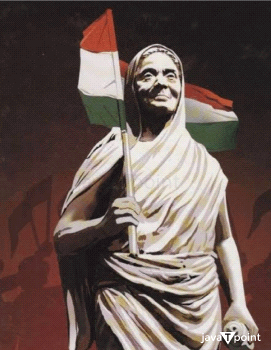
As the Indian Independence Movement gained momentum in the 20th century, Matangini Hazra took the initiative to voice her support for a free India. She persisted in spreading her ideas in the face of opposition. She also rallied tens of thousands of people to oppose British rule and social injustice. Nothing could stand in the way of Matangini Hazra since she was a force to be reckoned with. She became a significant person in India's history as a result of her exceptional moral courage. ConclusionMatangini Hazra was a great liberation fighter in India. Generations of Indians have been inspired by her life and sacrifice, and her contribution to the country's independence will never be forgotten. The legacy of Hazra is a demonstration of the strength of will and the human spirit. Her example shows us how to always work to uphold our values and to never give up on our goals, no matter what challenges we encounter. Frequently Asked Questions-Q. Matangi Hazra was a member of which movement? A. Matangi Hazra was a member of the Quit India Movement. Q. What significance does Matangini Hazra have? A. Matangini Hazra, a 73-year-old woman from West Bengal's Midnapore district, is one of the Quit India Movement's lesser-known leaders. On September 29th, she led almost 6,000 freedom fighters in a raid on the Tamluk police station. Q. When was Matangini Hazra born? A. Matangini Hazra was born on October 19, 1870. Q. Matangini Hazra was obliged to trek a big distance for what reason? A. Matangini took part in Mahatma Gandhi's civil disobedience movement (Salt Satyagraha) in 1932, made salt at the Alinan salt center, and was arrested for breaching the Salt Act. As punishment for her arrest, she was forced to travel a significant distance.
Next TopicNaina Jaiswal
|
 For Videos Join Our Youtube Channel: Join Now
For Videos Join Our Youtube Channel: Join Now
Feedback
- Send your Feedback to [email protected]
Help Others, Please Share









